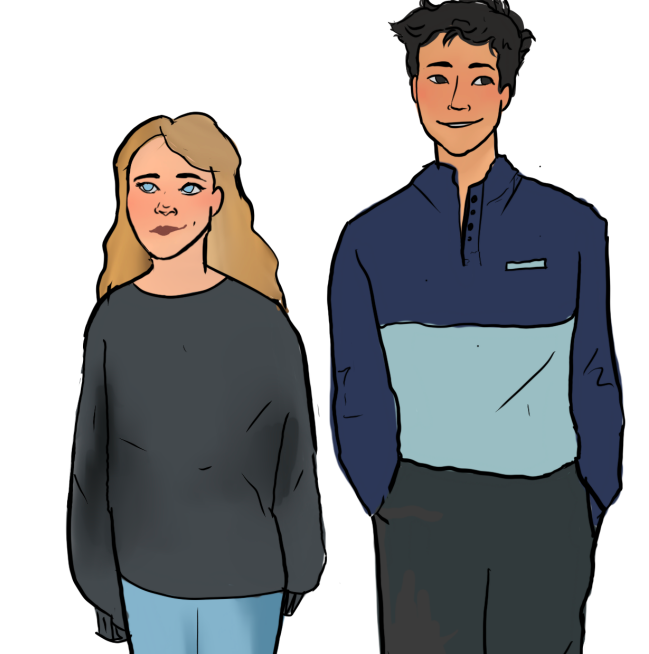As of Jan. 2020, Deerfield students adopted the new and far more relaxed winter dress code that the Board of Trustees established in the summer of 2019.
In a previous interview conducted by the Scroll last year, former Head of School Dr. Margarita Curtis commented on the reason behind the decision to switch to a more casual dress code from January to March. “In the winter months, we have athletic schedules that are on a rotating basis and do not have Tuesday and Thursday sit-down meals,” she said. “It is a time when the weather, certainly in New England, dictates a certain type of clothing.”
According to the Student Handbook, the new dress code simply asks students to “dress appropriately,” and not wear “torn or ripped garments and athletic apparel—including sweatpants and yoga pants.” Unlike the dress code in past years, new articles of clothing like t-shirts and jeans are now allowed and students no longer have to wear a blazer or sportcoat over their clothing.
The removal of strict requirements has had discernible effects on the community. Many students praised the flexibility it allows, especially in the winter. “With the old dress code, I felt pressured to wear a skirt or dress because that’s what I thought fit the best to the dress code,” Natasha Leong ‘21 said. “Now, I can still put effort into what I wear, but it is less of a pain to match [clothing items], and I take less time to get ready because I have more options.”
“Any change that allows for more comfort and choice is nice, especially in the cold,” Daisy Dundas ‘21 said.

On the other hand, some students miss the formality that the old dress code brought. “I agree that the more lenient dress code makes my mornings significantly more convenient. However, by not wearing a coat and tie to classes, I feel that some of the formality and tradition has been removed from DA,” said Ron Finkelberg ‘21. “It seems to me that there are both positives and negatives, but, overall, a Deerfield classroom feels more proper with formally dressed students and teachers.”
Seth Thayumanavan ‘20 has gone as far as abstaining from following the new casual dress code and has continued to abide by the old, formal dress code.
Explaining his decision, Thayumanavan said, “I have been silently protesting the change in dress code because I believe it is an arbitrary change to our Academy’s atmosphere. I understand the administration’s desire to continue to grow and evolve, but I felt that the reason for changing the dress code wasn’t convincing enough, and I believe that when a change is unnecessary, I have a right and responsibility to refrain from following it.”
Although the new dress code has been met with positive response so far this winter term, the issue of whether or not students have adhered to the dress code has arisen. While Jean Jin ‘22 enjoys the current dress code, she expressed her concern over students abusing the leniency: “I think sometimes [the new dress code] makes it so that there’s less motivation to dress up. It’s a lot easier to just show up to class not being fully awake than take the time to get ready.”
Despite the goal of lessening the gender imbalance of the old dress code, the ability to adhere to the dress code has been described as gendered. “I think it has been established that, when having a bigger range of clothing to choose from, it is easier for girls to get away with the dress code,” Rosa Sun ‘21 said. “I think both males and females should adhere to the dress code as much as they can to maintain our Deerfield tradition and academic quality. People find excuses such as ‘it’s 2020’ or ‘how can I sit in class comfortably in a blazer?’ to test time-honored traditions simply because it is our generation’s habit of testing everything that goes against our will.”
As students of the Academy, we are constantly held to expectations and rules. While following them can be tiring at times, it is nonetheless crucial to consider the reasons why such rules exist in the first place. As Sun said, “Why don’t we see teachers wearing sweatpants? Because they are in a working environment. Why should we wear sweatpants when we are in an academic environment?”
The new casual dress has incited a variety of reactions on how beneficial it is to students during the latter part of the winter term. For the near future, this new, more relaxed dress code for students will continue as planned.

